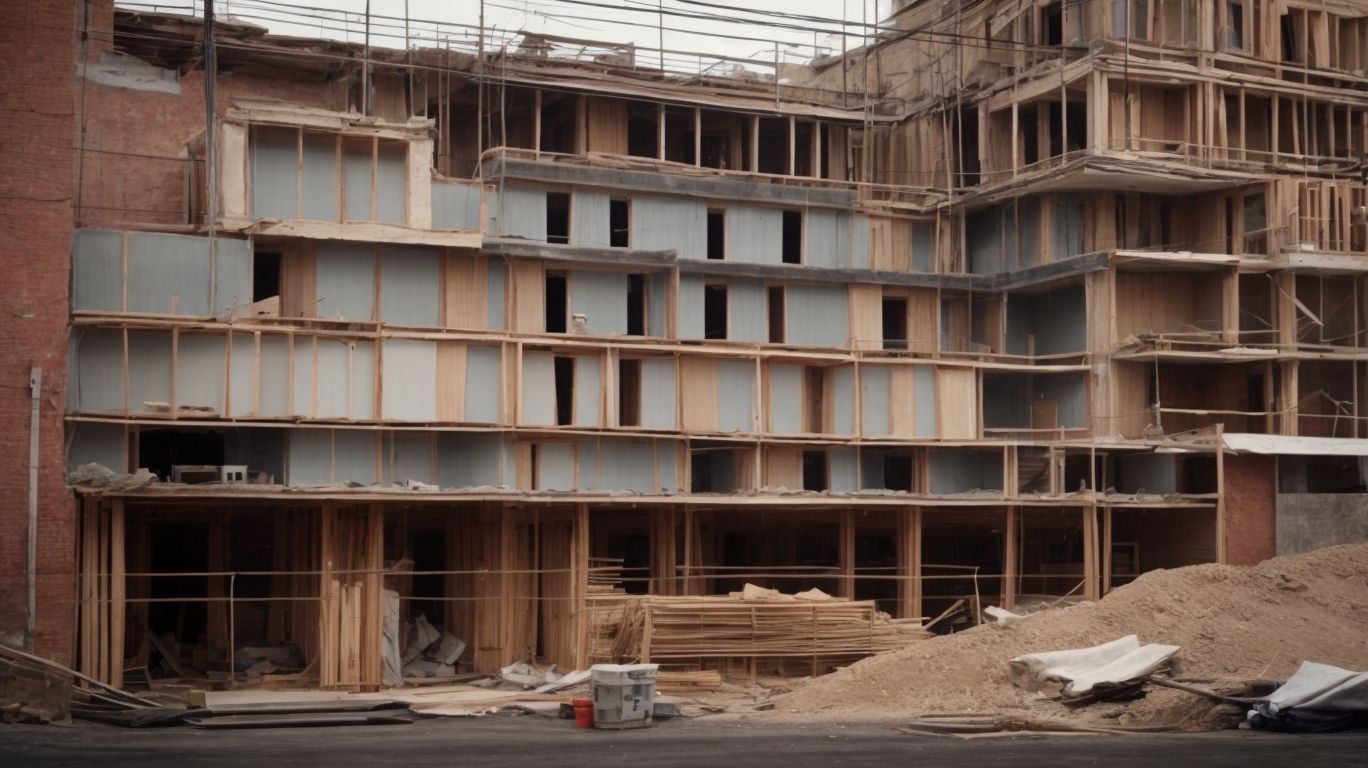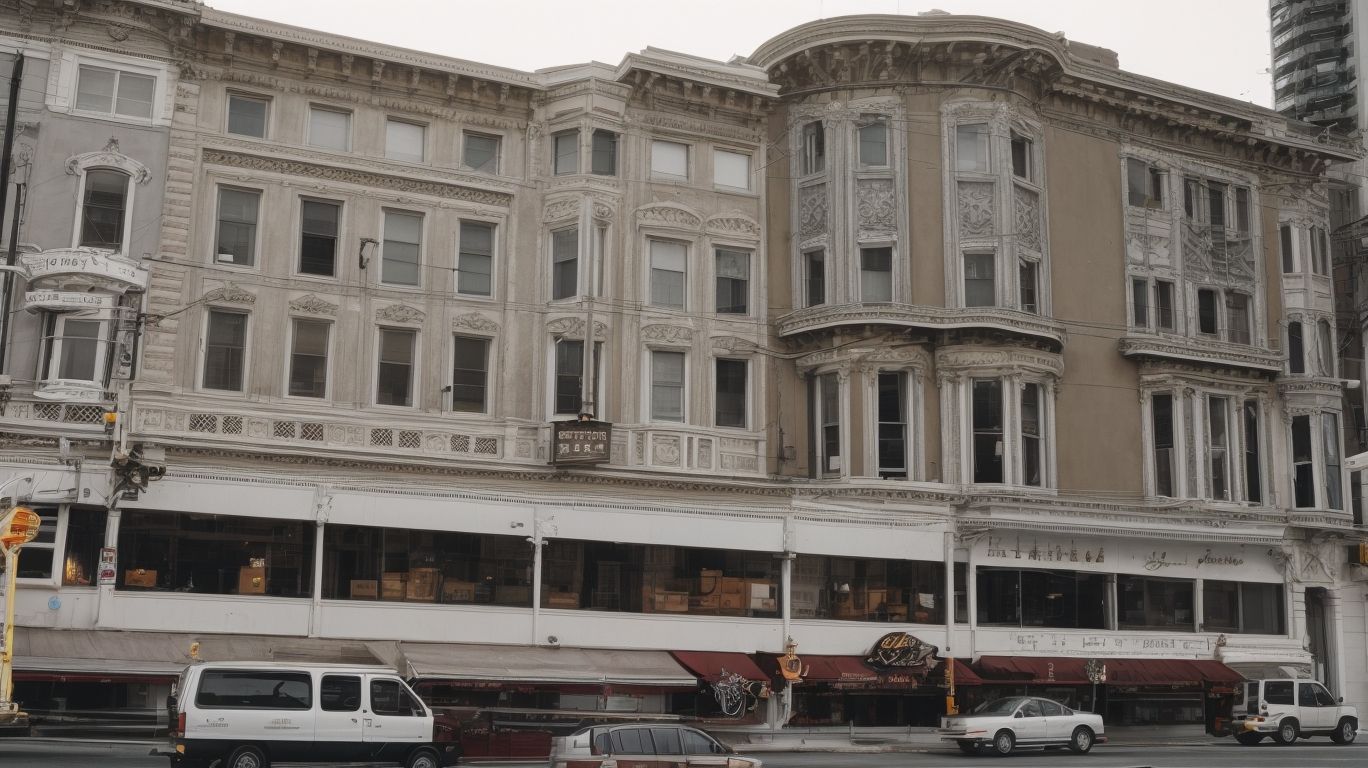
Understanding the Technical Side of Soft-Story Retrofits: Approaches and Materials Explained
If you own a soft-story building, you may have heard about the importance of a soft-story retrofit. But what exactly is a soft-story retrofit, and why is it necessary?
In this article, we’ll delve into the technical side of soft-story retrofits, exploring the different approaches to retrofitting, the materials used, the design process, and the benefits of undertaking a retrofit. Whether you’re a building owner, a structural engineer, or simply curious about construction, this article will provide valuable insights into this essential structural upgrade.
What Is a Soft-Story Retrofit?
A soft-story retrofit is a construction technique that involves reinforcing the structural integrity of a building, particularly in areas that are vulnerable to seismic forces.
This retrofitting method is essential for enhancing the safety and resilience of buildings, especially in regions prone to seismic activity. By strengthening the structural elements, such as the ground floor levels, these retrofits help to mitigate the risk of collapse during earthquakes, protecting both the occupants and the property.
Soft-story retrofits are crucial for ensuring compliance with seismic regulations, as they bring existing buildings up to the required safety standards, thereby contributing to overall community resilience in the face of natural disasters.
Why Is a Soft-Story Retrofit Necessary?
A soft-story retrofit is essential due to the inherent vulnerability of certain building structures to seismic hazards, necessitating measures to enhance structural integrity and ensure compliance with building safety regulations.
It is crucial to address the risks posed by seismic hazards, as these can significantly impact the stability and safety of buildings.
Non-compliance with safety standards can lead to severe consequences in the event of an earthquake, compromising the structural integrity of the building.
Therefore, undertaking a soft-story retrofit helps minimize the potential damage and safeguards the occupants.
By adhering to safety standards, the retrofit ensures that buildings are better equipped to withstand seismic forces, thereby enhancing overall safety and resilience.
What Are the Approaches to Soft-Story Retrofitting?
There are several approaches to soft-story retrofitting, including the addition of shear walls, utilization of bracing, and implementation of specialized construction techniques to reinforce the building’s structural stability.
Opting for shear wall installation involves integrating vertical elements to redistribute lateral forces, effectively strengthening the building’s framework.
Alternatively, bracing methods can be employed to enhance the lateral resistance, reducing the vulnerability of the structure during seismic events.
Various construction strategies such as using steel frames or moment frames can be utilized to further improve the building’s resilience against potential seismic hazards.
Adding Shear Walls
One approach to soft-story retrofitting involves the addition of shear walls, which serve as critical structural upgrades to reinforce the building’s resistance to seismic forces.
Shear walls are designed to absorb and redirect lateral forces caused by seismic activity, effectively reducing the building’s vulnerability to potential damage. By strategically placing shear walls, the overall structural integrity of the building can be significantly enhanced.
The process typically involves identifying the most suitable locations for shear wall installation, followed by careful planning and precise execution to ensure that the retrofitting strategy effectively reinforces the building. In addition to their seismic resistance, shear walls also contribute to the overall stability and strength of the structure, making them an essential component of successful retrofitting projects.
Installing Moment Frames
Another approach to soft-story retrofitting involves the installation of moment frames, which are utilized as effective retrofit solutions to enhance the building’s structural analysis and seismic resistance.
Moment frames are crucial for providing lateral resistance and strengthening a building’s ability to withstand seismic forces. This involves thorough structural analysis to seamlessly integrate the frames into the existing framework. By strategically placing them in key locations, like around openings or weak areas, the building’s overall seismic performance can be greatly enhanced.
This approach effectively addresses the vulnerabilities of soft-story buildings, making them more resilient to seismic events.
Using Braced Frames
Utilizing braced frames is another viable approach to soft-story retrofitting, integrating specialized construction techniques to enhance building safety and structural integrity in the face of seismic forces.
Braced frames are comprised of diagonal braces that are strategically placed within the building structure, providing lateral support that helps distribute forces and prevent excessive movement during seismic events. These frames are designed to absorb and dissipate energy, significantly reducing the impact of seismic forces on the building.
This approach not only reinforces the existing structure but also enhances its overall stability, making it an effective solution for addressing vulnerabilities in soft-story buildings. Braced frames offer a cost-effective and practical solution for improving the seismic performance of buildings, ensuring the safety of occupants and preserving the integrity of the structure.
What Materials Are Used in Soft-Story Retrofits?
Soft-story retrofits utilize various materials such as steel, wood, and concrete to reinforce the building’s structural integrity and resistance to seismic forces.
Materials such as steel, wood, and concrete are essential for maintaining the stability and safety of a structure. Steel’s high tensile strength makes it ideal for reinforcing vulnerable areas like the ground floor. Wood, on the other hand, offers flexibility and can be strategically used to distribute loads. Concrete, known for its compressive strength, is often used for foundation and column enhancements, improving a building’s ability to withstand lateral movements during earthquakes.
Steel
Steel is a primary material used in soft-story retrofits, offering significant reinforcement for foundations and structural elements to mitigate seismic hazards and enhance building stability.
This versatile material is widely employed in retrofitting projects due to its high strength and ductility, providing crucial support to the existing framework of buildings.
By incorporating steel elements into soft-story retrofits, engineers can effectively address weaknesses in the structure, improving its resistance to lateral forces and ensuring enhanced resilience during seismic events.
Steel offers adaptability in design, allowing for efficient integration with other construction materials, making it a valuable component in the overall retrofitting process.
Wood
Wood is commonly utilized in soft-story retrofits, serving as a versatile material for implementing construction methods and facilitating structural upgrading to enhance building resilience.
Wood is commonly used in engineered wood products, like glulam beams and cross-laminated timber, due to its high strength and stability. This makes it a popular choice for retrofits, where efficient construction methods, such as panelized or prefabricated systems, can be utilized to speed up the process and provide cost-effective solutions.
In soft-story retrofits, the use of wood plays a crucial role in increasing the seismic resilience of buildings. This allows them to better withstand earthquakes and other forms of structural stress, making them safer and more durable.
Concrete
Concrete plays a crucial role in soft-story retrofits, particularly in foundation strengthening and as a key component of retrofit solutions aimed at enhancing structural resilience.
Concrete is a durable and versatile material that can effectively reinforce existing foundations and resist seismic forces. In retrofitting projects, it is commonly used to construct shear walls, providing structural stability to vulnerable buildings. Its ability to add support and evenly distribute forces contributes greatly to the overall improvement of structural resilience in soft-story retrofits.
How Are Soft-Story Retrofits Designed?
Soft-story retrofits are designed through a comprehensive process that encompasses structural analysis, evaluation of seismic performance, and the implementation of specific retrofitting techniques to mitigate vulnerabilities.
The structural analysis involves a detailed assessment of the existing building’s design and materials to identify weaknesses in the soft-story configuration. Evaluating seismic performance includes simulating potential earthquake scenarios to understand how the building would respond. This evaluation helps in determining the necessary retrofitting measures to enhance the building’s resistance to seismic forces.
Once the vulnerabilities are identified, retrofitting techniques such as adding steel frames, shear walls, or moment frames are implemented to strengthen the building’s structure and improve its overall seismic performance.
Analyzing the Building’s Structure
The initial step in soft-story retrofit design involves analyzing the building’s structure to assess its structural integrity, load path, and vulnerabilities that require mitigation.
This process often begins with a comprehensive structural assessment, which entails a detailed evaluation of the building’s existing framework, including its foundation, columns, and supporting elements. Engineers meticulously investigate the load paths within the structure to understand how forces are distributed and transferred.
Identification of potential vulnerabilities, such as weak connections or inadequate bracing, is crucial for determining the necessary retrofit measures. By integrating relevant keywords such as dynamic analysis, lateral forces, and retrofit options, the retrofit design process is comprehensive and effective in addressing soft-story deficiencies.
Determining the Appropriate Retrofit Technique
After structural analysis, the next step in soft-story retrofit design involves determining the most suitable retrofit technique based on the construction methods and seismic analysis of the building.
This process includes evaluating the structural vulnerabilities and potential failure modes specific to the soft-story building.
By considering the building’s construction type and the seismic forces it may face, engineers can determine whether a steel moment frame retrofit, concrete wall retrofit, or other techniques are most appropriate.
The decision is influenced by factors such as cost-effectiveness, construction feasibility, and the expected performance of the retrofit technique in reducing seismic vulnerability.
Calculating the Required Materials and Dimensions
The final phase of soft-story retrofit design involves calculating the necessary materials and dimensions to ensure the seismic design and structural integrity of the retrofitting process.
This stage entails precise measurements and assessments to determine the appropriate steel reinforcements, foundation upgrades, and other materials essential for enhancing the building’s resistance to seismic forces.
Accurate calculations of load-bearing capacities and distribution patterns are imperative to guarantee the structural stability and overall safety of the retrofitted structure. The process also involves evaluating potential stress points and vulnerability areas to ensure that the retrofit design effectively addresses the specific seismic risks associated with the soft-story building.
What Are the Benefits of Soft-Story Retrofits?
Soft-story retrofits offer significant benefits, including increased structural stability, improved seismic performance, and enhanced resistance to potential building vulnerabilities.
Earthquake retrofits are crucial in strengthening the lower floors of buildings to withstand lateral forces and reduce the risk of collapse. This ensures the safety of occupants and enhances the overall resilience of a structure. These retrofits also minimize damage to the building and its contents during seismic events.
By addressing weaknesses in buildings with soft-story construction, these retrofits play a crucial role in safeguarding communities and minimizing the potential impact of earthquakes. They are an important measure in promoting safety and disaster preparedness.
Increased Structural Stability
One of the primary benefits of soft-story retrofits is the significant increase in structural stability achieved through targeted reinforcement strategies, reducing the risks of structural vulnerability.
This enhancement in stability is crucial as soft-story structures are particularly susceptible to seismic activity and high winds.
By implementing retrofit measures such as adding steel moment frames, shear walls, or using structural steel, the building’s resistance to lateral forces is markedly improved, thereby minimizing the potential for collapse during an earthquake or other loading events. Consequently, these reinforcements greatly contribute to enhancing the overall safety and resilience of the building, providing occupants and owners with peace of mind in the face of potential natural disasters.
Improved Safety for Occupants
Soft-story retrofits contribute to improved safety for building occupants, enhancing building resilience and reducing the potential risks associated with seismic events.
These retrofits are crucial for strengthening older buildings with weak ground floors. This ensures they can better withstand the lateral forces exerted during earthquakes.
By reinforcing these vulnerable areas, the overall safety of the structure is significantly increased. This provides peace of mind for those working or living within the building.
This proactive approach to structural enhancements speaks to the ongoing efforts within the construction industry to prioritize safety and resilience. Ultimately, this benefits the community at large.
Protection Against Earthquakes
Soft-story retrofits provide robust protection against the destructive forces of earthquakes, minimizing building vulnerability and ensuring a higher level of resilience during seismic events.
These retrofits can significantly reduce the impact of seismic forces on multi-story structures with open frontages, such as apartment buildings and parking structures.
By reinforcing the lower levels of the building, they help to prevent collapse or extensive damage, ultimately safeguarding inhabitants and preserving the structural integrity.
Through these measures, soft-story retrofits play a crucial role in fortifying buildings against potential seismic hazards and enhancing community resilience to earthquakes.
How Much Does a Soft-Story Retrofit Cost?
The cost of a soft-story retrofit varies depending on the complexity of the retrofitting process, the extent of seismic analysis required, and the specific structural modifications implemented.
The overall cost of a retrofit is influenced by various factors. These include the complexity of the process, accessibility to the building, required materials, and labor. Seismic analysis requires a detailed evaluation of the building’s structural integrity, which may involve advanced technologies and expertise. The type of structural modifications, such as adding shear walls or reinforcing columns, can also greatly impact the cost of a soft-story retrofit.
What Are the Steps to Getting a Soft-Story Retrofit?
Obtaining a soft-story retrofit involves specific steps such as consulting with a structural engineer, obtaining necessary permits, and hiring a licensed contractor to oversee the retrofitting process.
The first step in the process is to consult with a structural engineer who will assess the building’s construction and recommend the appropriate retrofitting measures. Once the engineer’s recommendations are in place, obtaining the necessary permits from the local building authority is crucial.
These permits ensure that the retrofitting work complies with safety and construction regulations. It’s important to hire a licensed contractor with expertise in soft-story retrofits to oversee the entire process, ensuring that the structure is reinforced in a way that prioritizes safety and stability.
Consulting with a Structural Engineer
The initial step in getting a soft-story retrofit involves consulting with a structural engineer to assess the building’s renovation needs and develop appropriate strategies for seismic mitigation.
This consultation process is crucial as it helps in understanding the unique structural challenges of the building and determining the most effective approach to strengthen its vulnerabilities.
The structural engineer evaluates the existing building conditions, identifies potential weaknesses, and collaborates with architects and construction teams to devise comprehensive retrofit solutions. By integrating innovative engineering practices, the retrofit strategies aim to enhance the building’s resilience against seismic events while ensuring compliance with local building codes and regulations.
Obtaining Necessary Permits
Securing the necessary permits is a crucial step in the process of obtaining a soft-story retrofit. This ensures compliance with building safety regulations and construction standards.
Obtaining the necessary permits is crucial for addressing safety considerations and complying with structural engineering codes and standards. These permits demonstrate a property owner’s commitment to maintaining the structural integrity of their building and protecting occupants. Additionally, the permit acquisition process helps ensure a smooth and efficient retrofit construction process, minimizing potential risks and liabilities by ensuring compliance with industry regulations.
Hiring a Licensed Contractor
The final step in getting a soft-story retrofit involves hiring a licensed contractor with expertise in retrofit techniques and a commitment to upholding construction standards and safety measures.
Engaging a licensed contractor offers numerous benefits for property owners. These professionals bring expertise and experience to the table, particularly in retrofit techniques. They can assess the unique needs of a soft-story building and devise customized solutions that comply with building codes and regulations.
Furthermore, licensed contractors play a crucial role in ensuring that the retrofit process adheres to stringent safety measures. This ultimately enhances the structural integrity and resilience of the building, providing peace of mind for property owners.




No Comments